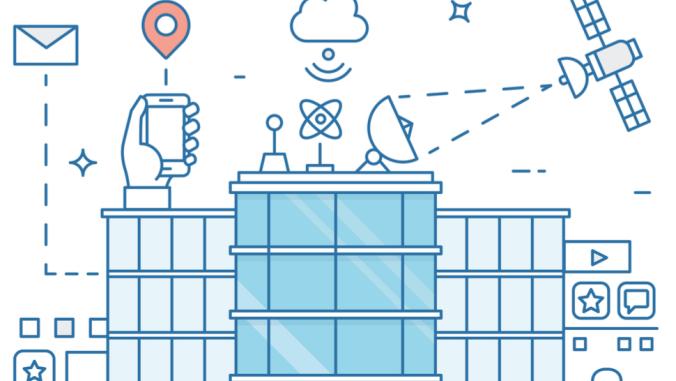The data center emissions challenge — it's not just the big guys
Silicon Valley giants are most identified with data center energy usage, but companies in other industries also have an opportunity to make a dent.

If you ask people to name a tech company, they'll likely choose from a familiar list: Microsoft, Google, Amazon, Facebook.
Those companies are indeed technology giants, but they are not the only businesses who rely on vast amounts of data. Banking, for instance, is based on the secure processing and analysis of online transactions. Retail is involved in extensive analysis of online consumer activities for targeted marketing. Media organizations upload thousands of videos every day.
The computer systems that store this giant mass of data are housed in large facilities. Together, they are known as data centers. Those computers and infrastructure require a lot of energy.
A decade ago, data centers were barely present in projections of international energy use. Today, they account for around 3 percent of global energy demand. In the U.S., data centers consumed around 70 billion kilowatt-hours in 2014 — equivalent to the output of about eight large nuclear reactors.
And with energy use comes emissions; data centers currently create around 2 percent of the world's entire greenhouse gas footprint. That's a problem, but it's also an untapped opportunity.
Increasing ambition
Companies around the globe are looking for ways to reduce their greenhouse gas emissions to meet individual or collective climate targets.
Those responsible for cutting emissions at companies do this through activities such as reducing emissions associated with employee commuting, such as by offering incentives for employees who bike to work.
These initiatives are useful and worthwhile, but their impact can be small when set against emissions the same company might generate from data center usage. For example, 54 percent of Visa’s total energy consumption energy consumption is tied to data centers.
Companies from a wide range of sectors benefit from exploring the various ways to cut emissions from their data centers. That might mean different things for different organizations.
Salesforce, for example, has achieved net-zero emissions through its use of cloud services, where data infrastructure is not rented or owned by a specific company but is instead available to numerous customers at once, which can be more efficient. By combining this approach with renewable energy and carbon credit purchases, Salesforce is able to offer a carbon-neutral cloud to its customers.
Ramping up renewables
A straightforward way to cut emissions from data center usage is to increase the proportion of renewable energy powering data centers, and companies are acting on this possibility.
Autodesk, for example, committed to sourcing 100 percent renewable energy in new data centers in Europe by the end of fiscal year 2017.
However, a transformation of the data center industry to renewable energy neither will happen overnight nor through the work of a single company. Collective, collaborative action from data center customers and providers is required.
Data center customers need to send a strong message about their commitments to renewable energy and emissions reductions and articulate their preference for data center providers who are willing to make a similar commitment. By doing so, they can give data center providers a clear business case for working towards renewable energy.
This is why over 20 companies are signatories to and supporters of the Corporate Colocation and Cloud Buyers’ Principles (PDF), developed by BSR's Future of Internet Power initiative. The principles outline six criteria that companies using data center services would like to see their service providers meet, such as providing data on customer energy consumption, disclosing facility energy sources, and supporting renewable energy advocacy efforts.
By giving preference to providers that meet the criteria, companies not only will be better positioned to meet their own sustainability goals — they also will help accelerate the demand for renewable energy.
As more customers send market signals that they prefer services powered by renewable energy, more providers will commit, giving new customers the option to select a provider working toward a renewable future. Data center customers can have a huge impact simply by expressing these preferences together.
To reach ambitious emissions reduction targets, companies must explore every opportunity. Data center usage might be pushing your numbers up. But if you use data centers, you are in a position to help increase the momentum of the clean energy revolution through your purchasing choices.


